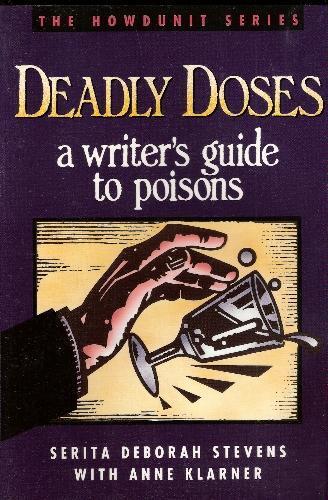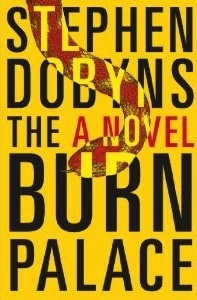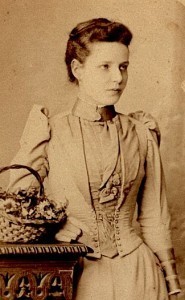Rosina Lippi's Blog, page 31
December 11, 2012
Unabridged Audio Into the Wilderness is on sale + giveaway UPDATE
The unabridged audio editions of the Wilderness novels are really expensive, or always have been. Right now, however, they are on sale at Audible.com. If you have an Audible membership they are really cheap (as you can see). Some cheaper than others.

giveaway: Into the Wilderness unabridged audio
I’ll gift one person the first three Wilderness novels (unabridged, Audible.com editions) in the series — so please leave a quick comment to throw your name in the hat.
I’ll draw a name on December 21 and arrange the delivery (via email) right away. Might be a nice Christmas present.
Someone just commented to say that the reduced price didn’t show up for her when she clicked the link. I’m not sure why that would be, unless it has to do with membership. If that is the case, please note that right now there’s a promotion that may be of interest. The way this works is this: you join for three months, at about $8 each month, which gets you a total of three book credits. That’s a very good deal as some audiobooks cost as much as $75 or more. At the same time you’re eligible for the sales price on other books. So (for example) if you enroll now, you use your first token to get one audiobook, but you can also buy Into the Wilderness (or any other book currently on) at a vastly reduced price.

With your membership, you will receive one credit per month plus members-only discounts on all audio purchases.
I hope this makes sense. It is, at any rate, a good deal.

Unabridged Audio Into the Wilderness is on sale + giveaway
The unabridged audio editions of the Wilderness novels are really expensive, or always have been. Right now, however, they are on sale at Audible.com. If you have an Audible membership they are really cheap (as you can see). Some cheaper than others.

giveaway: Into the Wilderness unabridged audio
I’ll gift one person the first three Wilderness novels (unabridged, Audible.com editions) in the series — so please leave a quick comment to throw your name in the hat.
I’ll draw a name on December 21 and arrange the delivery (via email) right away. Might be a nice Christmas present.

December 6, 2012
stories waiting to be written
I am very dependent on visual prompts, for all things in life, in all stages of writing. Photos are sometimes worth a million words, to me. I’ve been starting to collect photos which strike me as story-full on a Pinterest board. If you have a photo (or know of one on the web) you think might be a good addition, please let me know. If it’s repinnable and fits the general idea, I’ll add it.
This particular story prompt is a very busy one for me. For some reason I am sure that the young man is the nun’s own son, because she didn’t go into the convent until after she had been a widow for some years. But you may see somebody else, entirely.
Click on the photo to see a larger version on the Pinterest board, along with the other writing prompts I’ve pinned there.
And please let me know what you think.
Source: photographyblogger.net via Rosina on Pinterest

December 1, 2012
Degenerate Italian desperado: takes the money and refuses to use the knife
Have a look at this short article which appeared in the New York Times on 17 April 1885. I read this three times and I still cannot decide if it’s an editorial or some kind of satire.
 Note the thesis: when Italians come to America their morals give way to greed. So for example, rather than charging a reasonable $10 to stab a man, the Italian in question was so greedy as to ask ten times as much. He finally agreed to a fee of $300, took the money and accepted a knife to actually carry out the assignment, and then simply did not do the work he had contracted to do. Took the money, took the knife, and snuck away. The cad.
Note the thesis: when Italians come to America their morals give way to greed. So for example, rather than charging a reasonable $10 to stab a man, the Italian in question was so greedy as to ask ten times as much. He finally agreed to a fee of $300, took the money and accepted a knife to actually carry out the assignment, and then simply did not do the work he had contracted to do. Took the money, took the knife, and snuck away. The cad.
So I’m at a loss. Any thoughts out there?
New York Times.
17 April 1885.
ITALIAN DEGENERACY.
The Italian workman in his native land is a simple, honest person, who will work at low wages, and will do his work conscientiously and well. If, however, he emigrates to this country and lives here for any length of time he becomes demoralized. He is unwilling to work except at the highest attainable wages, and he loses his habit of conscientious, faithful labor.
Of this painful degeneracy the case of Mr. DOMINICO SPADO affords striking evidence. An Italian resident of this city, desiring to have his son-in-law stabbed, applied to Mr. Spado who has the reputation of being a skillful workman, to execute the job. In Naples no honest man would have the impudence to ask more than $10 for so simple an act as the stabbing of another man in the same rank of life. Mr. Spado, however, had resided for some time in this country and instead of charging for any specified job its fair value he preferred to charge the highest possible price. He actually demanded $1,000 for killing a single son-in law, and when he was indignantly called an extortioner, he cynically admitted the fact.
After much bargaining, however, he finally lowered his demand, and consented to perform the job for $300, the employer to furnish the tools. There is no possible defense for such conduct. Mr. Spado knew that he was charging an extortionate price, and that nothing but the necessities of his employer could induce the latter to give his consent. Even at this stage of the affair Mr. Spado showed that he had no conscience, and a little later he showed that he had no sense of shame. After taking the $300 and a new knife, Mr. Spado was bound by every sentiment of honor and decency to go and kill his man. His employer had put full confidence in him and unless full confidence can always exist between employers and bravos the trade of the latter must at no distant day prove a failure. Instead of justifying this confidence by stabbing the son-in-law in a workmanlike way, Mr. Spado actually went to him and agreed — doubtless for a consideration — not to stab him. Worse than all, Mr. Spado went further and betrayed his employer — an act that, had it been committed in Naples, would have caused his expulsion from the Camorrista and made him the scorn of every honorable bravo. Very likely Mr. Spado has benefited his pocket by coming to America, but in common with many of his fellow-immigrants he has unquestionably lowered his moral tone.
He is an extortioner for he demanded $1,000 for a job that he knew was not intrinsically worth more than $10; and he is a dishonest man, for he failed to do his duty and he betrayed his employer. Perhaps he is now priding himself on his superiority as a money maker to the modest Camorrista of Naples; but the day will come when this extortioner and traitor will envy the calm conscience of the humble and happy Neapolitan, who is contented with a fee of $10 and who faithfully stabs the man whom he has been hired to stab.

November 27, 2012
I write like…
Now, this I would not have predicted.

I write like
George Orwell
I Write Like by Mémoires, journal software. Analyze your writing!

books for writers, part one
I regularly hear from readers who want to know what books I’d recommend to somebody who has just started writing fiction. It’s a reasonable question, as there are about a bazillion how-to-write-a best-selling-novel-and-get-published books out there.
There are several distinct subcategories of the writing-related how-to books — craft, theory, inspiration, marketing/sales, reference, writing exercises — and in each of these there are good and bad (that is, less than useful) books. I personally am primarily interested in books that fall into the areas of craft, inspiration, and reference.
Reference books aimed directly at writers have to be approached with caution. Some of them are expertly put together. For example:
 Deadly Doses: A Writer’s Guide to Poisons was widely considered to be very well done — but it is woefully out of date; it was first published in 1990 and has never been revised. If you’re writing about Caligula’s Rome, that’s not going to be a big worry. For anything more recent, however, this book is not going to be of great help.
Deadly Doses: A Writer’s Guide to Poisons was widely considered to be very well done — but it is woefully out of date; it was first published in 1990 and has never been revised. If you’re writing about Caligula’s Rome, that’s not going to be a big worry. For anything more recent, however, this book is not going to be of great help.
What Jane Austen Ate and Charles Dickens Knew: From Fox Hunting to Whist-The Facts of Daily Life in Nineteenth-Century England covers too big a time period to be reliably useful. The Regency (Jane Austen) and Victorian (Charles Dickens) were so distinct from one another, something is going to get the short end of the stick. In this case, it’s Jane. You wouldn’t know that, would you, unless you happen to be an expert on these periods in English history, and thus you need to approach all such books with caution. My own experience is that there are better ways to get the kind of atmospheric/social and cultural information you would need to write about Boston in 1865 or Maine in 1785 or London 1960. The internet has made one excellent resource widely available, but few writers seem to know about the revolution in the way diaries and journals are being made available. Examples I’m especially fond of:
The Republic of Pemberley is where die-hard Jane Austen readers congregate to discuss everything about Austen’s novels. And I mean, everything. A good example is a discussion on the practicalities of correspondence by mail, which includes a link to this illustrated definition of crossed-letter writing.
Do History, a website that provides Martha Ballard’s diary in minute detail. Martha was a midwife in Maine between about 1785 and 1812, and she kept a close diary that was ignored by (male) historians for a couple hundred years until Laurel Ulrich came along and actually read the thing closely. It’s hard to imagine a better source of information about village life in the post-revolutionary period. The website is almost overwhelming in its wealth of related material, but I would recommend that anybody seriously interested in women’s history start with Ulrich’s book itself:
A Midwife’s Tale: The Life of Martha Ballard, Based on Her Diary, 1785-1812
 And then there’s Samuel Pepys. Oh, Samuel with your rounded cheeks and ink stained fingers. Where do I start? Maybe with his name, and how to pronounce it: peeps.
And then there’s Samuel Pepys. Oh, Samuel with your rounded cheeks and ink stained fingers. Where do I start? Maybe with his name, and how to pronounce it: peeps.
Peyps was born in England in 1633, and he is known primarily as a man who kept a detailed diary. The diary itself might be of limited use to you, unless you’ve also got an edition that is heavily commentated by a good historian. You can sit down and read through it, as it is available in its entirely online, here. Or you can go to the website, which is a marvel of modern technology and enough to make any historical novelist’s heart race. Each day’s entry is included, and here’s the kicker: names of people and places are annotated. When Pepys writes about “Up and to the office, where all the morning sitting. “ you don’t have to wonder what he means by that.. There’s an explanation right there about the Navy Office, as well as a map of where it was in Pepys’ London. And if that weren’t enough, there are many notations contributed by scholars and historians and plain old Pepys enthusiasts which provide closer detail, wider perspective, and analysis.
I would call that an embarrassment of riches.
Later this week I will post something about how-to craft focused books for writers. A more contentious subject, with potential fireworks.

November 24, 2012
Review: The Burn Palace, Stephen Dobyns

February 2013
The Burn Palace
Stephen Dobyns
Publisher: Blue Rider Press (February 7, 2013)
Language: English
ISBN-10: 0399160876
ISBN-13: 978-0399160875
I had an advance copy of this novel for review purposes, and I must say I’m pleased to have been able to read it sooner than later. Because it was that good.
If you look up what information is available you may see this described as a horror novel. It is not. However, I can’t give you a cubbyhole to put it in, not even a pithy title x meets title y kind of description. So here are the basics: a small town in Rhode Island, a series of inexplicable and sometimes bizarre crimes and murders (some of the details are horrifying, but just briefly), and a healthy rumor mill that works overtime in order to come up with an explanation which will make the whole business less creepy. Because there are some creepy elements. So the stories of Satanists, baby cannibalism, orgies, Wicca excesses and shape shifters begin to make the rounds and evolve until you’ve got a town on the verge of a nervous breakdown. This is the framework of the story, the engine that keeps it going.
But the heart of this novel is the town of Brewster and the people in the town. Awful, irritating, disturbing but also (and sometimes, in the same person) sweet, funny and engaging. There’s Woody Potter, a state police detective who is descending into depression after his girlfriend leaves him, Jill Franklin, a would-be reporter who gets on his bad side from the get-go and then, gradually, gets under his skin. There’s Acting Police Chief Fred Bonaldo (who Woody thinks should be called Pretend Police Chief) who has no credentials but uses all his connections to wiggle his way into the job because he loves parades and uniforms and wants to walk in the annual parade in that particular uniform. He is, of course, immediately overwhelmed by the crime spree, but blunders along. There are ambulance drivers with questionable habits, aging hippies raising sheep, a step-father who is off his medications and slowly evolving (he believes) into a truly dangerous dog; opera loving sheriffs and nurses who are desperate and others who are the calm at the heart of the storm.
Most of all there is a small group of children, and two kids in that group: Hercel (short for Hercules) a smart and highly capable kid who has a lot to deal with at home (the stepfather mentioned above is his) as well as a couple talents he prefers not to share with the world, and his counter part in every way, Baldo Bonaldo. Baldo is the youngest and best beloved child of Pretend Police Chief Fred Bonaldo and looks just like him “rotund and plodding, with a similar redfaced, swollen look, though he was more than a foot shorter, didn’t wear glasses, and had all of his hair…. a gesticulator.”
Baldo is known far and wide for his addiction to the kind of practical jokes best appreciated by fifth grade boys; he spends all his allowance sending away for the latest advances in fart cushions, and he is always absolutely sure nobody will suspect it was him who put the burping powder in the library staff’s coffee urn.
These day-to-day episodes are so authentic in tone that they lend the odd and increasingly violent crime spree a sheen of reality. Characters who show up only briefly somehow get your attention long before they venture into harm’s way. I’m not going to say more here about the most frightening characters and their motivations, because I really don’t want to give too much away. It would be a shame to ruin the experience of discovering it for yourself.
Dobyns is extremely well established as a poet, an author of fiction and essays with a long list of publications. I had never read anything of his before Burn Palace, but that’s a lack I will be rectifying.

ebook readers, can I get your feedback, please?
The controversy over ebook pricing is not going to resolve itself anytime soon, and here’s the reason why: publishers are confounded.
A hardcover novel is on the market for a year before they release a softcover edition, specifically because they count on recouping a big part of the investment through hardcover sales. The higher the hardcover sales, the longer it takes to put out the softcover. This approach has been set on its ear by ebooks, because people expect (quite reasonably) to pay less for a product that has so much less overhead (no paper, printing, transportation costs).
So if the publisher releases the hardcover ($25) and the ebook ($12) at the same time it’s pretty clear that the traditional sales strategy is no longer going to work. The are two obvious solutions to this: (1) charge as much for the ebook as the hardcover; (2) don’t release the ebook until the softcover version is released (thereby protecting hardcover sales).
Readers don’t like either of these options. So publishers came up with an alternate approach. For example:
Publishers seem to indulge in a lot of magical thinking.
Assume for a moment this is a book you really want to read, and your first choice is the Kindle ebook. What do you do?

November 19, 2012
visual prompts and the writing mind
If I need to really understand something complicated, images, videos and schematics are crucial. You’d think that the text or verbal description would be enough in my case — I use words to tell stories for a living, after all — but no.
 Writing goes far more smoothly if I have images to support the creative process. I used to surround myself with photocopies of landscapes, faces, 19th century clothing, tools, houses, carriages that I could look at when I was having trouble with a phrase or sentence or scene. Now I mostly do that on the computer screen. One place to gather and arrange images is Pinterest, a service which is wildly popular right now (and here’s my page, by the way). It’s a little like StumbledUpon, but more streamlined and focused.
Writing goes far more smoothly if I have images to support the creative process. I used to surround myself with photocopies of landscapes, faces, 19th century clothing, tools, houses, carriages that I could look at when I was having trouble with a phrase or sentence or scene. Now I mostly do that on the computer screen. One place to gather and arrange images is Pinterest, a service which is wildly popular right now (and here’s my page, by the way). It’s a little like StumbledUpon, but more streamlined and focused.
When I see a good image online, I can pin it to one of my Pinterest boards. I can also sort through other people’s boards — people who are interested in the same things — and repin whatever they’ve got up. This is a real jewel of a service for somebody like me.
This young woman’s photo is one I repinned from someone else’s board (and there are links so you can follow back to where the image originated) onto my 1883 board (which is a little boring just at the moment, mostly old buildings for reference). I like her expression, which I interpret as slightly uncomfortable (note the right hand is curled in, almost clenched) but resigned to the process. I wonder if the photo was her idea, or if her parents insisted. Maybe this is a photo she had made for someone she planned to marry. She’s wearing her best clothes, I think. And may I say: so glad fashions have changed, because that collar would drive me nuts.

girl in a scarf, via pinterest
Usually when I look at a photo like this I identify it right away if it’s one of my characters (oh look, Jemima, smirking as usual) but more often it’s just an interesting face that goes along with the crowd of faces that make up the backdrop of the story. Sometimes I come across a face I would like to have as a character, but who just doesn’t fit in. I hold onto the image thinking that some day I will need it. This girl with her wrap-around braids is an example of a face that feels familiar to me, but hasn’t yet spoken up to tell me her story.

November 18, 2012
encouragement or schadenfreude? you decide.
Every once in a while you run across an article about the rejections great/successful writers got when they were starting out. Here’s one such list which includes names like Gertrude Stein, Ernest Hemingway and William Golden:
Though Lord of the Flies was one of my favorite books from high school, it seems some publishers disagreed. One unimpressed agent called the classic “an absurd and uninteresting fantasy which was rubbish and dull.” To date, the book has been required reading in high schools for nearly fifty years, 14.5 million copies have been sold, and Golding’s work has been adapted for film twice.
I’ll admit that I don’t think Ann Rand should be on this list, but I’m not sure I can take any satisfaction in the other names. It all reminds me of hazing, in reverse.





